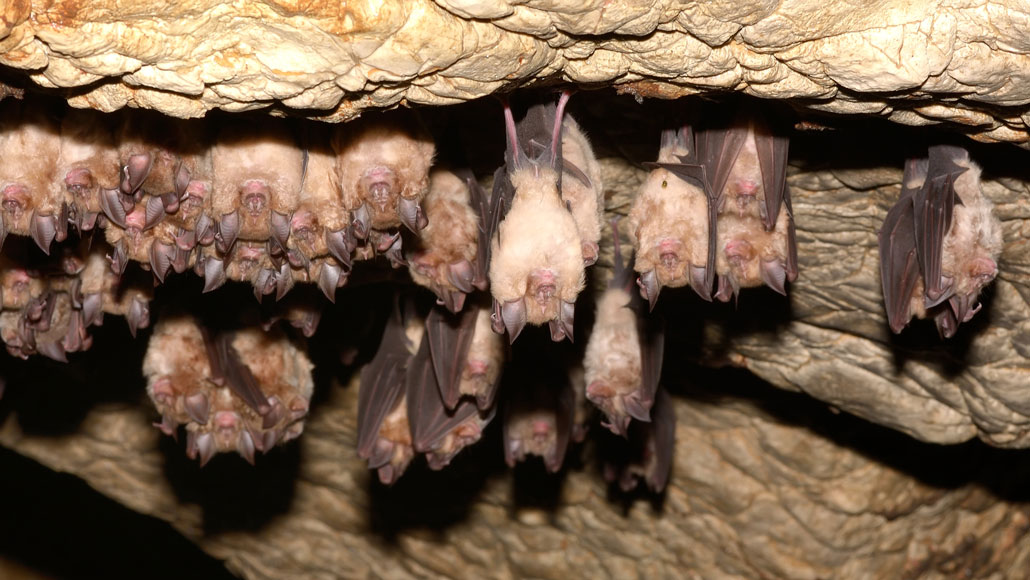One key change may have helped the coronavirus become a global menace
One key mutation may have put a bat coronavirus on the path to infect people

Scientists don’t know exactly where the coronavirus came from. But a new study pinpoints a mutation that may have helped a bat coronavirus jump to humans. The greater horseshoe bat (Rhinolophus ferrumequinum, shown) is one bat species known to carry coronaviruses.
Remus86/istock/Getty Images Plus
A single change in a key viral protein may have helped the coronavirus behind COVID-19 make the jump from animals to people. This change is called a mutation. And it may have set the virus on its way to becoming the scourge it is today.
The mutation may help the virus’ spike protein strongly latch onto the human version of a host protein. The coronavirus grasps onto that ACE2 protein to enter and infect cells. There, the virus can make copies of itself. This mutated virus has a stronger ability to lock onto human cells than other coronaviruses. It also better makes copies of itself in lab-grown human lung cells.
That’s what a team of scientists reported July 6 in Cell.
“Without this mutation, I don’t think the pandemic would have happened like it has,” says James Weger-Lucarelli. He is a virologist. He works at Virginia Tech in Blacksburg. COVID-19’s global spread might have been less likely without this change, he says.
Where exactly the coronavirus came from is still a mystery. But it’s important to figure out how an animal virus gained the ability to infect people. That could help researchers develop antivirals or vaccines to prevent it from happening again, Weger-Lucarelli says.
Andrew Doxey is a computational biologist. He wasn’t involved in the study. He works at the University of Waterloo in Canada. The new findings hint that the mutation is important. But, Doxey notes, “it’s potentially one of multiple” changes that made the jump from animals to people possible. “It’s not necessarily the only mutation,” he says.
Ramón Lorenzo Redondo agrees. He is a virologist. He works at Northwestern University Feinberg School of Medicine in Chicago, Ill. The researchers used an approach that is not typically used for viruses, he says. That means the method may have overlooked other important mutations.
In the study, Weger-Lucarelli and his colleagues analyzed more than 182,000 genetic blueprints of the coronavirus. They compared the human viruses to four coronaviruses that don’t infect people. Each came from a bat or pangolin. They searched for differences that might have helped the coronavirus spread among humans. The team looked at changes in their amino acids. These are building blocks of the virus’ spike protein.
A tiny change
Their search pinpointed one important difference. In animal viruses, an amino acid called threonine (THREE-oh-neen) shows up in one spot. But in the coronavirus that causes COVID-19, it is replaced at that spot by the amino acid alanine (AL-uh-neen.
The mutation with alanine is called T372A. The researchers predict that the T372A mutation removes some sugars covering the spike protein. Those sugars might be “getting in the way,” Weger-Lucarelli says. So removing them could give the virus better access to ACE2. Then, it could more easily break into cells.
Experiments suggest this is what happens.
The team saw that when a virus with an alanine gets into lab-grown human lung cells, it makes more copies of itself than do versions that instead have threonine. In the future, the researchers plan to study other mutations. They want to know how other changes might have helped an animal virus adapt to humans.
It’s unclear when the T372A mutation appeared, says Arinjay Banerjee. He is a virologist in Canada. He works at the University of Saskatchewan in Saskatoon and did not take part in the new study.
A bat coronavirus with a threonine may have infected people first. Then, maybe it rapidly adopted an alanine. That change could have made it easier for the virus to infect people. Or it’s possible that the alanine appeared in bats or in another animal before making the jump. “Those questions, I think, are still outstanding,” Banerjee says.







